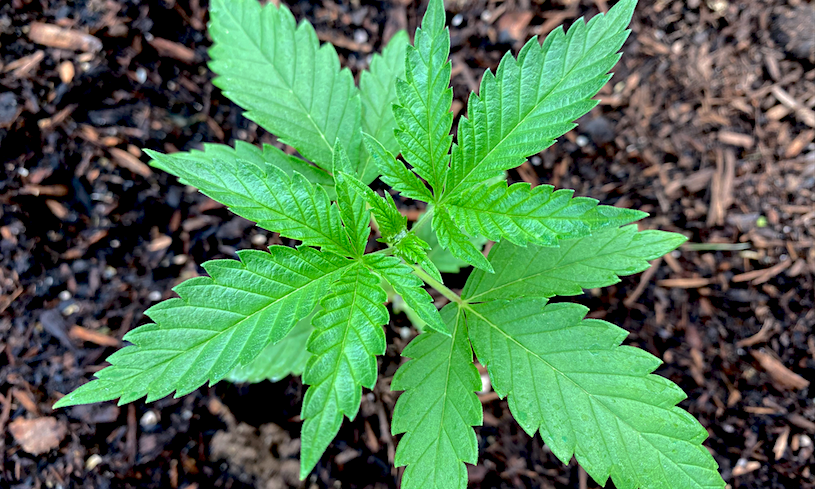“What we’re saying is these [rules] aren’t rationally related to protecting kids, and they are not something that you have authority to do under our constitution.”
By Rebecca Rivas, Missouri Independent
A panel of Missouri lawmakers has spent several hours in recent weeks debating whether or not aliens and robots should be banned on marijuana product labels.
Humans, animals and fruits are already not allowed—an effort by the state to keep products out of the hands of children. But would robots fall under that ban?
“In my opinion, a robot is not encompassed within the definition of a human or the shape of a human,” said Sen. Nick Schroer, a St. Charles Republican who is chair of the bipartisan legislative Joint Committee on Administrative Rules, during an October committee meeting. “Any alien that I’ve seen doesn’t look like a human being.”
Division of Cannabis Regulation Director Amy Moore countered that some robots and aliens look like humans and some don’t. And it’s up to cannabis regulators, she said, to make the call.
The robot debate is part of an ongoing power struggle between the division and the committee over one line in the constitutional amendment that legalized recreational marijuana last year. It states that labels and packaging for marijuana-related products, “shall not be made to be attractive to children…to protect public health.”
Missouri is one of few states that require plain packaging in the adult-use cannabis market, according to new rules that went into effect on July 30. Businesses have until May to comply with the rules, specifying the packaging should be one primary color and can have up to two logos or symbols that can be different colors.
The committee, along with marijuana industry leaders, expressed opposition to these rules in May. And at a hearing Wednesday, the committee voted 9–0 to send a report to the department and House and Senate leaders stating that the division overstepped its authority when it included examples, such as an alien and graphics of appropriate color use, in the new packaging guidance issued in July.
Missouri Department of Health and Senior Services
Legislators said during the October 18 meeting they’ve heard from marijuana businesses that find the guidance too complicated to navigate, and they questioned the division’s authority overall to set the plain packaging rules.
“What we’re saying is these [rules] aren’t rationally related to protecting kids,” said state Rep. Peter Merideth, a St. Louis Democrat and a member of the committee, “and they are not something that you have authority to do under our constitution. And our job is simply to make sure they’re not exceeding their statutory and constitutional authority.”
Merideth told The Independent the report is essentially a “strongly-worded letter” that puts the division on notice. At the October meeting, Merideth questioned Moore about the need for the division’s pre-approval process of new labels.
Moore said the division has had constitutional authority to require licensed companies to submit their packaging for approval since medical marijuana was legalized, but didn’t start using that authority until after recreational use was legalized last year.
“We learned from how operations played out,” under medical marijuana, Moore said. “It was an area of greatest non-compliance. It also is one that is particularly difficult to enforce on the back end, where there’s already been all this investment.”
Requiring licensees to destroy everything has a “very large financial impact,” she said, and businesses are resistant to do that. She said it’s beneficial for everyone to get approval before businesses print their labels to avoid that situation.
“But we also, through the change in the law, understood that there should be an even greater importance placed on this for public health and protecting children,” Moore said.
Merideth said he’s largely been voicing the concerns of marijuana businesses at the committee hearings because he hasn’t heard from any constituents who are concerned about the issue.
But Nichole Dawsey, executive director of PreventEd, formerly known as the National Council on Alcoholism and Drug Abuse, said she’s heard from plenty of parents worried about kids getting sick off cannabis products with enticing labels.
“The fact that people are not concerned about the impact of cannabis on young people is false,” Dawsey said. “It’s just our voices are not quite as loud.”
She said PreventEd is largely made up of “public-health nerds” who view the division’s new label and packaging requirements as essential to achieving the constitutional mandate.
A study published earlier this year in the journal Pediatrics found calls to poison control centers about kids 5 and under consuming edibles containing THC rose from 207 in 2017 to 3,054 in 2021—a 1,375% increase.
The findings were based on more than 7,000 pediatric cases reported to the National Poison Data System, a database that tracks reports of poisonings.
Labels and packaging can also impact teenagers who are “starting to experiment,” and don’t understand that edibles and vapes can be much more potent, Dawsey said.
“Clear is kind,” she said. “While it might seem a little silly to say no aliens, no robots, no humans…we’ve seen what happens when we are not clear.”
This story was first published by Missouri Independent.
New Guide On ‘How To Regulate Psychedelics’ Lays Out Four-Tiered Model Focused Specifically On Nonmedical Use
Read the full article here









